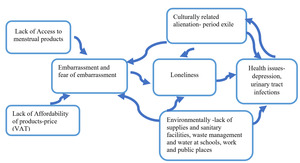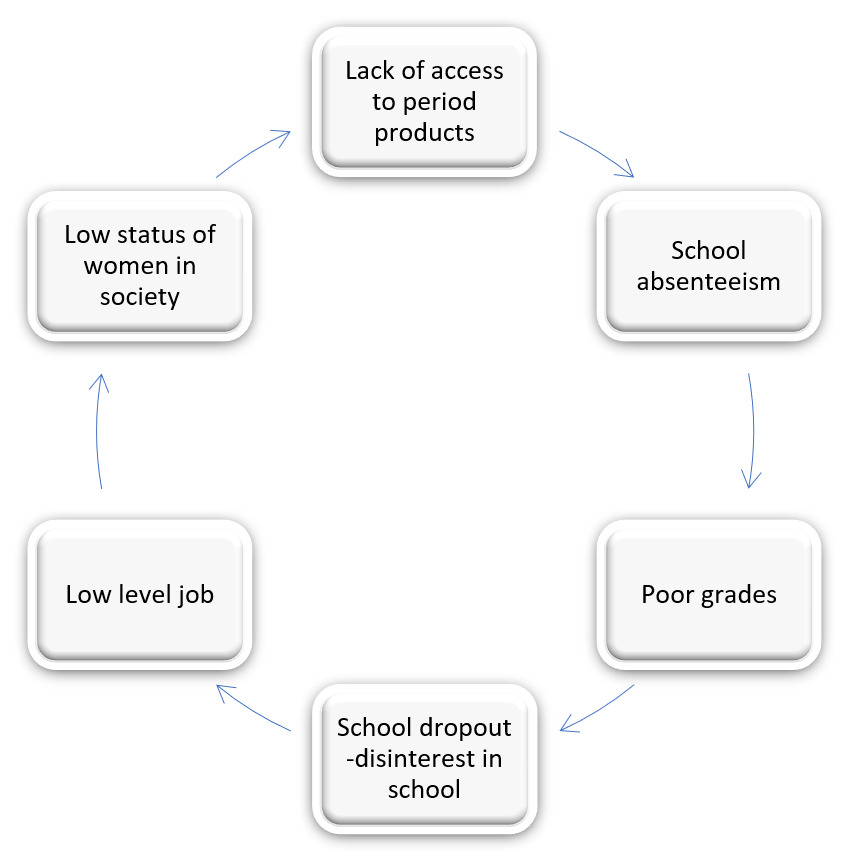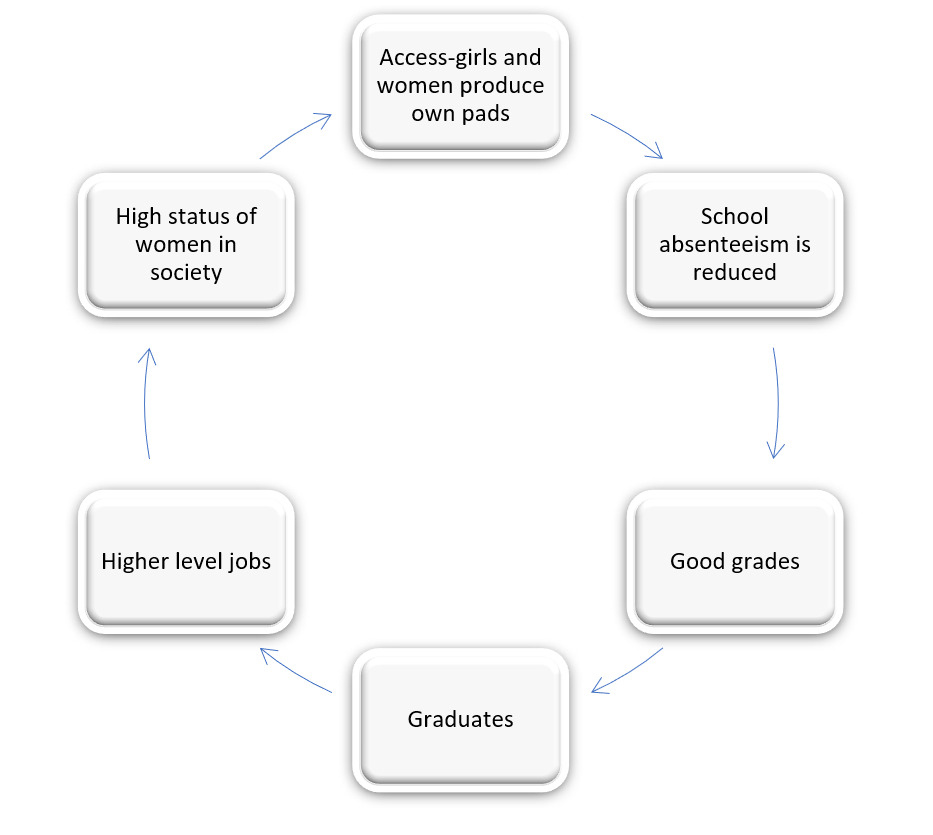Poverty is defined as not having enough money to meet basic needs food water clothing and shelter.1 According to the World Bank, poverty is hunger, lack of shelter, being sick and not being able to see a doctor, not having access to school, not having a job, fear for the future, and living one day at a time.1 Poverty isolates by restricting access to recreational activities.1 Poverty is a complex societal issue that requires everyone’s attention.1
What then is period poverty?
It is the root cause of many evils in women’s lives. Period poverty is defined as a lack of access to menstrual products, hygiene facilities, waste management, and education.2 Periods do not stop for pandemics and 800 million people menstruate daily.3 Pandemic measures like quarantine and social distancing lead to loneliness. Period poverty too leads to loneliness. That makes it a double-edged sword and makes addressing period poverty a matter of urgency. Period poverty causes physical. Mental and emotional challenges. The stigma that shrouds periods further prevents individuals from talking about it.2,4
Need for research and engagement
Lack of data and limited research on period poverty is a challenge.2 More research and engagement are called for. At a glance some period poverty facts from the US only:
-
500 million people lack access to menstrual products and hygiene facilities.
-
16.9 million people who menstruate in the US are living in poverty.
-
Two-thirds of the 16.9 million low-income women in the US could not afford menstrual products in the past year, with a half of this needing to choose between menstrual products and food.
-
14.2 % of college menstruating people in the US had experienced period poverty in the past year.
-
10% of menstruating college students experience this monthly.2
-
Tax on menstrual products in the US ranged from 4.7% to 10% in 2019.2
Barriers to menstrual products, education and sanitation
There are social, cultural, economic, and political barriers to menstrual products, education, and sanitation.2,5 Period poverty has also been associated with health issues including depression4 and urinary tract infections.2
Types of period poverty
-
Access related.
-
Affordability related.
-
Embarrassment and fear of embarrassment.
-
Culturally related alienation period exile.
-
Environmentally–lack of supplies and sanitary facilities.
-
Loneliness–a culmination of two or more all the other forms lack of access, affordability fear of embarrassment.
Links between period poverty and other forms
Many women without access to menstrual products improvise with old blankets, chicken feathers, old rags, newspapers, mud, and even cow dung.2 Odours and leakages become a challenge and for school girls, these negative experiences of menstruating can lead to discomfort, distraction, absenteeism and even dropping out of school.2 School drop-outs have difficulty entering the job market and if they do, they find themselves in low pay jobs without security, predisposing them to economic and social poverty.6
The role of shame and guilt
Shame also prevents people from talking about menstrual issues including access to pads, the taxing of these products, and even the ingredients used e.g., dioxin that is harmful to health. The right language to use becomes an additional challenge too since not all women menstruate and many people who are not women menstruate.2
Access to menstruation products can make a difference. In a Bangladesh study, women missed work 6 days a month on average while menstruating.7 Provision of menstrual products decreased absenteeism.7
Sustainability
Access to menstrual products is one component. The importance of water and sanitation cannot be over-emphasized. Intersectoral collaboration in gender issues is paramount if period poverty is to be overcome. In line with sustainability is the issue of environmentally friendly products. Our world has a plastic problem. Our water bodies are drowning and climate change is here. There is a need for reusable environmentally friendly menstrual products calling for innovation.
Discussion
What can institutions, employers, and men do?
The Global Menstrual Collective defines menstrual health as a state of complete physical. mental and social well-being and not merely the absence of infirmity in relation to the menstrual cycle. If half of the world is comprised of women and more than half of university students are female, menstrual issues can and should no longer be ignored.
The Global Menstrual Collective made proposals and these could guide men, institutions, and employers that are prepared to make a difference in reducing period poverty;
-
Start and support initiatives that promote access to menstruation products and information about menstruation, changes, and hygiene practices.2
-
Providing facilities that enable menstruating people to care for themselves during menstruation ensures access to water, sanitation, and waste services.2
-
Accord women the opportunity to receive a diagnosis for menstrual cycle disorders and access health care.2
-
Ensure a positive and supportive environment that allows menstruating people to participate in all aspects of life, going to school and work, sport.2
-
Invite people engaged in addressing period poverty to give talks and normalize menstruation.
-
Employ zero tolerance to dirty jokes about menstruation.
Conclusions
Period poverty like other forms of poverty can be debilitating. It can take different forms and has emotional, physical, and mental health effects on individuals. More than half of the world’s population are menstruating people, it is high time period poverty becomes everybody’s business. Since the world is drowning in plastic, reusable environmentally friendly menstrual products need to be explored. This calls for innovation alongside intersectoral collaboration to ensure access to water and sanitation.
Funding
None.
Authorship contributions
JM had the initial concept and wrote the first draft. AM and SS contributed to further drafts. All authors approved the final draft.
Competing interests
The authors completed the Unified Competing Interest form at http://www.icmje.org/disclosure-of-interest/ (available upon request from the corresponding author), and declare no conflicts of interest.
Correspondence to:
Dr Janet Michel
One Planet Sustainables
Bahnhofstrasse 75
Roggwil 4914
Switzerland
[email protected]






